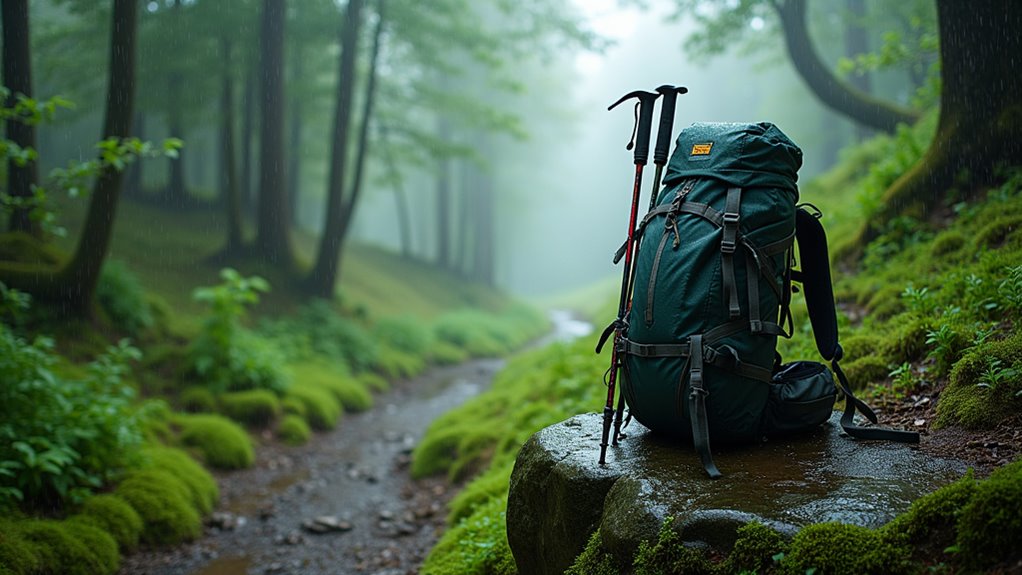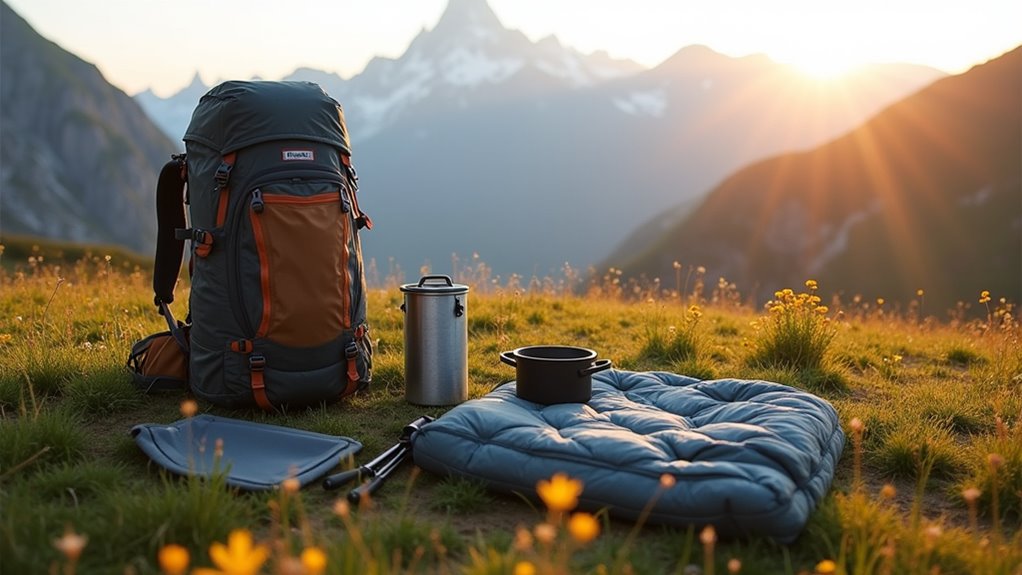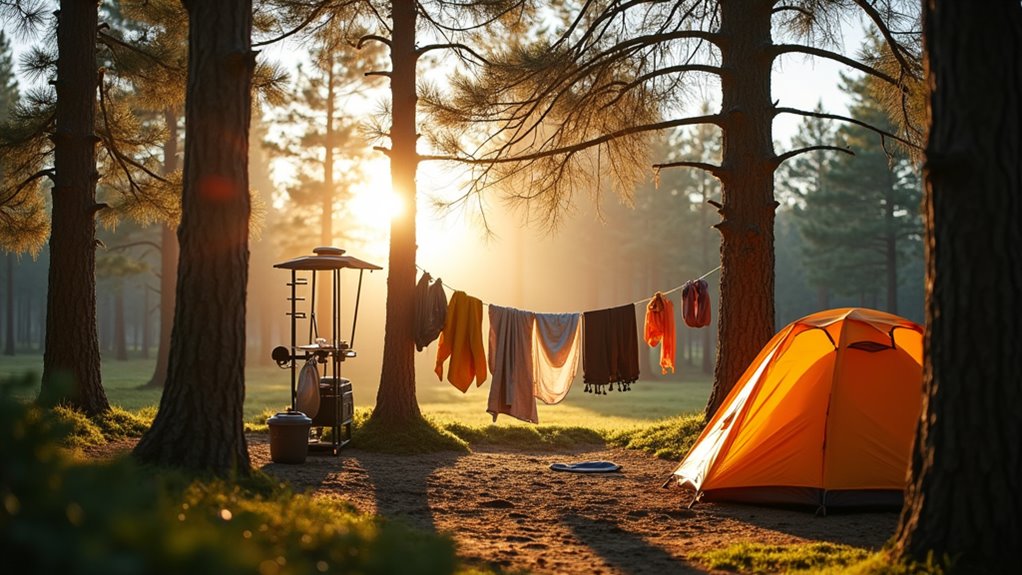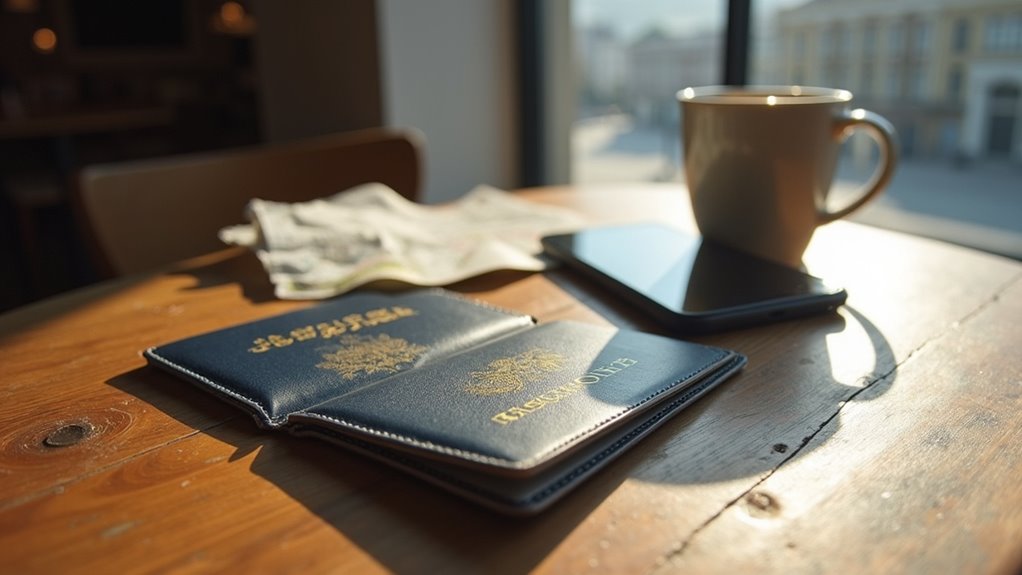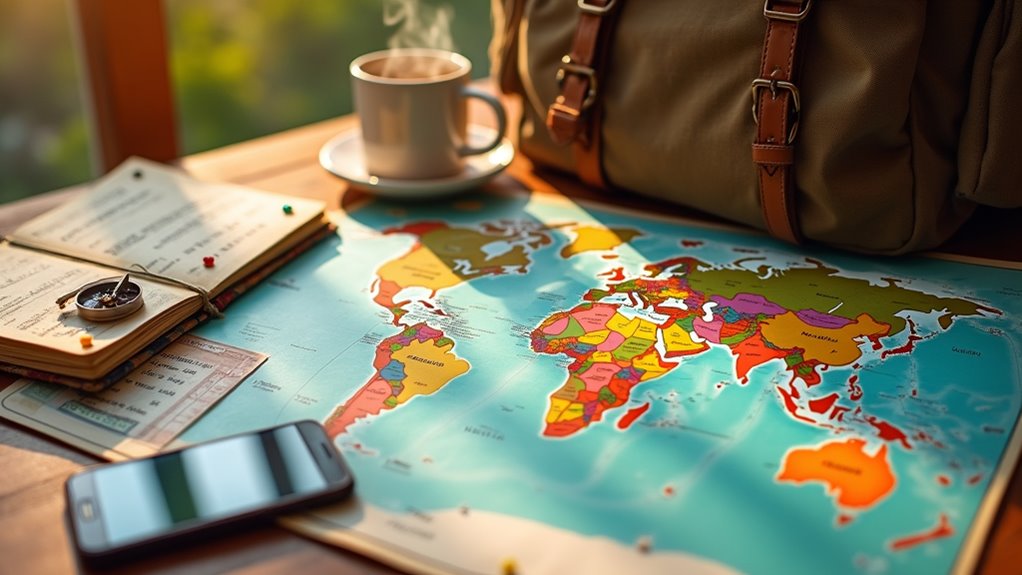You can hike in the rain safely and comfortably if you pick sheltered trails like forested paths rather than exposed summits, monitor local weather for heavy rain or lightning, and wear waterproof layers with quick-drying fabrics. It’s essential to pack gear in waterproof liners, bring extra dry socks, and use trekking poles for stability. Stay vigilant about flash-flood areas and avoid deep water crossings. By following these strategies, you’ll be prepared for wetter conditions and learn additional practical tips ahead.
Although hiking in the rain presents unique challenges, you can safely enjoy the outdoors by preparing with proper planning, appropriate gear, and a clear understanding of weather risks. When selecting a trail, choose forested paths, riverbanks, or waterfall routes over summit hikes, as rain and low clouds often obscure mountain views. Prioritize shorter trails, preferably half a day or less, to reduce your exposure if conditions worsen. Eliminate any routes with a history of flash floods or those featuring unpassable creek crossings, especially after heavy rain. Avoid trails with steep terrain that might become unstable or prone to mudslides, and always check for recent washouts or closures before departing.
Choose forested or riverside trails on rainy days and avoid summits, steep slopes, or flood-prone routes for a safer hike.
Monitor hourly weather forecasts closely for precipitation intensity and lightning risk. Before setting out, check for flash-flood warnings related to the drainage areas near your intended path, and use real-time radar to track approaching storms throughout your hike. Note the forecasted temperature ranges to help you choose appropriate layering, and identify emergency bailout points along your route in case you need to exit quickly.
Your clothing system is essential. Wear a waterproof-breathable jacket with sealed seams to block rain, and use moisture-wicking base layers—never cotton—to manage sweat. Opt for quick-drying pants with a durable water repellent (DWR) coating rather than heavy rain pants, and consider packing an ultralight rain skirt or packa for extra protection. Always carry spare dry socks in a waterproof bag. Pack a satellite communicator to ensure you can call for help if needed, especially in remote or low-signal areas.
Line your backpack with a waterproof liner to protect your gear, and attach trekking poles for added stability on slick surfaces. Protect electronics in waterproof cases or dry bags, and bring a headlamp with fresh batteries to maintain visibility under dark skies. Gaiters can help prevent water from entering your footwear. Consider investing in a quality pack cover to provide an additional barrier against persistent rainfall and keep your equipment dry.
Pack calorie-dense snacks in waterproof containers and insulate your hydration hose if cold rain is expected. Consume food hourly to maintain energy, pre-hydrate before the hike, and avoid alcohol or caffeine to prevent dehydration. For stream crossings, use trekking poles to probe depth, cross facing upstream, and never cross if water exceeds knee height.
Always have a clear emergency protocol, including sharing your itinerary and knowing hypothermia symptoms.
